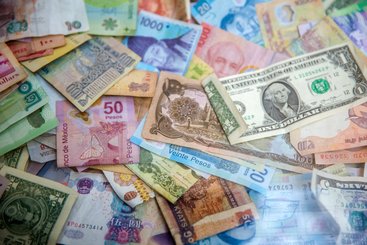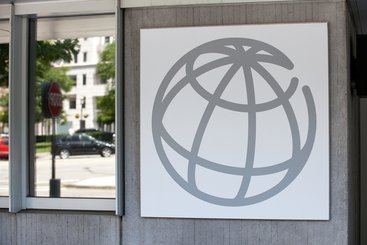The callable capital of the World Bank and other multilateral development banks is the ultimate unknown quantity — but it shouldn’t be.
When 44 countries agreed to create the World Bank at the Bretton Woods conference 80 years ago, they knew that financial markets would be suspicious of this strange new nonprofit bank.
So governments put their money where their mouth was. Along with paid-in capital, they committed a hefty chunk of “callable capital” to guarantee World Bank bonds.
It worked a charm. Within a few years, the World Bank had a AAA credit rating and a stellar reputation with bond market investors.
It worked so well, in fact, that other multilateral development banks were soon created following the World Bank template, with callable capital at the core of their capital structure.
Callable capital is subscribed by shareholders but not paid in, and serves as an emergency guarantee to repay bondholders if an MDB faces a severe financial shock. This treaty commitment of callable capital — now totalling nearly $900 billion across seven MDBs — still underpins their AAA ratings, along with a rock-solid track record of loan repayments.
But the world has changed since 1944. MDBs are being asked to tackle an ever growing array of problems across the globe, from insufficient economic opportunities to inadequate social services to the threat of climate change. MDBs need to ramp up lending to make the public goods investments that low- and middle-income countries can’t afford on their own and private investors consider unprofitable or too risky.
To meet these costlier times, shareholder governments — backed by an influential G20 report from 2022 — are pushing MDBs to lend more with existing resources. Making the best use of callable capital is part of that effort and will be a key topic at the Spring Meetings of the World Bank and International Monetary Fund in Washington, D.C. this week.
A team of researchers at the ODI think tank have for the past year been exploring how to maximize the value of callable capital, and we’ve just published our findings.
The answer is not so obvious, as callable capital has never been called and the MDB statutes describing it are vague.
As a result, rating agencies have widely divergent methods for deciding what callable capital is worth. For S&P Global Ratings, callable capital means that the seven major MDBs in our study — World Bank’s International Bank for Reconstruction and Development, Asian Development Bank, African Development Bank, Inter-American Development Bank, European Bank for Reconstruction and Development, Asian Infrastructure Investment Bank, and CAF (Development Bank of Latin America and the Caribbean) — could easily lend $500 billion more and remain AAA. Moody’s and Fitch Ratings are far less generous.
To add to the confusion, the MDBs themselves don’t put a value on how callable capital might support their own lending capacity — it’s not included as a factor in their own internal capital adequacy models.
The central problem is the lack of basic standards to evaluate callable capital. For commercial banks, regulatory frameworks orient shareholders, management, and markets by providing standards on capital instruments.
But MDBs are not regulated, because they are international institutions and very different from commercial banks. Callable capital does not fit easily in modern banking regulation, just as many other aspects of MDBs don’t either, like government shareholders, nonprofit mandates, and preferred creditor status.
This needs to be sorted out. MDBs are too important to accept uncertainty on a key pillar of their financial structure. We need to know what MDBs can do with existing resources and put discussions about new capital needs on firmer footing.
To resolve this, shareholders and MDB management need to work together as a system, defining standards that are credible to capital markets and inform the methodologies of rating agencies.
Our work offers proposals on how to do that.
The first priority is to clearly define the process of how and when callable capital might be called, both by shareholder governments and MDBs. MDBs then should systematically think through how to monitor, manage, and recover from potential shocks, and how callable capital fits into that.
Together, these measures will substantially strengthen how bond markets, credit rating agencies, and shareholder governments themselves understand callable capital and, more broadly, the resilience of MDBs to financial stress.
Lastly, shareholders and management need to decide the best way to use the callable capital already on MDB books to release more lending capacity.
How much new capacity will result depends on how the work is done and how rating agencies react. It could easily result in a permanent 10%-20% boost in loan portfolio size across the major MDBs. That won’t be enough to meet the lending volumes called for last year by the G20’s independent expert group report on MDBs, but it’s a step in the right direction.
None of this means that MDBs are more likely to actually trigger a capital call. Stress testing shows that this probability is extremely remote, and even if it were to happen, the amount of callable capital needed would be a fraction of the total.
Work has begun to make better use of callable capital, spurred by forward-leaning leaders like World Bank President Ajay Banga. But more is needed, and it will take time and concerted, collective effort.
Are there financial risks? Yes, but they are very, very low. And they pale in comparison to the risks of not adequately preparing the MDBs to help address the challenges we face to put our world on a more sustainable path forward to 2030 and beyond.



